Your child's Craniosynostosis treatment plan
- Home >
- Craniosynostosis >
- Craniosynostosis Treatment Plan
What is craniosynostosis?
Craniosynostosis is a condition in which one or more of the sutures in an infant's skull fuse prematurely. This fusion restricts the normal growth of the skull, resulting in an abnormal head shape and, in some cases, potential complications for brain development.
What is the treatment for craniosynostosis?
The treatment for craniosynostosis typically involves surgery to correct the abnormal skull shape and allow for normal brain growth. The specific surgical procedure depends on the type and severity of the craniosynostosis.
If your baby is under 6 months of age, then your surgeon might recommend minimally invasive endoscopic surgery to release the fused sutures or, in more complex cases, surgery to remove and reposition sections of the skull.
The surgical team will discuss with you and decide on the best individual option for your baby if there is a craniosynostosis.
Following minimally invasive surgery, a craniosynostosis helmet is essential for allowing the head to recover and grow back to a regular shape as without it the head could remain in the deformed shape. Read more about craniosynostosis.
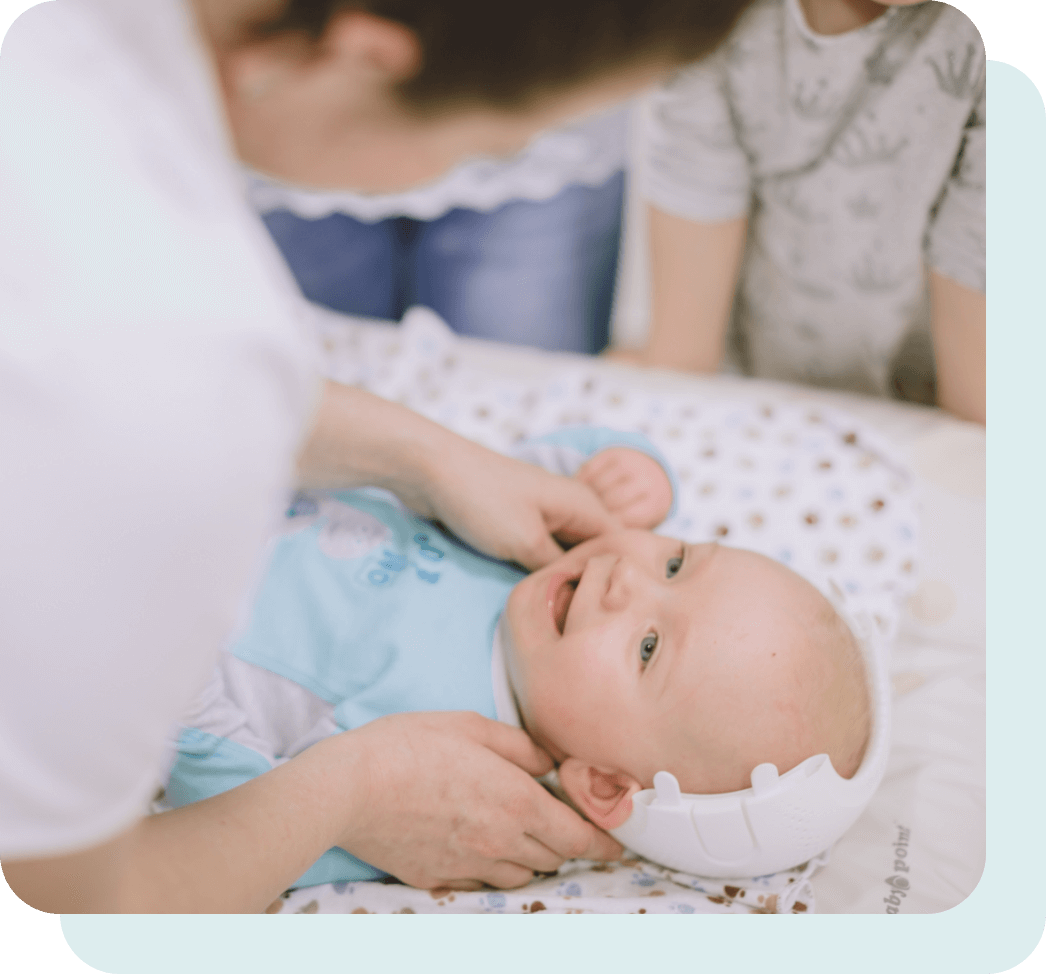
How can we help?
Technology in Motion offers craniosynostosis treatment for those infants who have undergone surgery and need to wear a cranial orthotic helmet.
If you think that your baby might have craniosynostosis and are unsure what to do, contact us, and we can give an assessment.
Your Treatment Journey
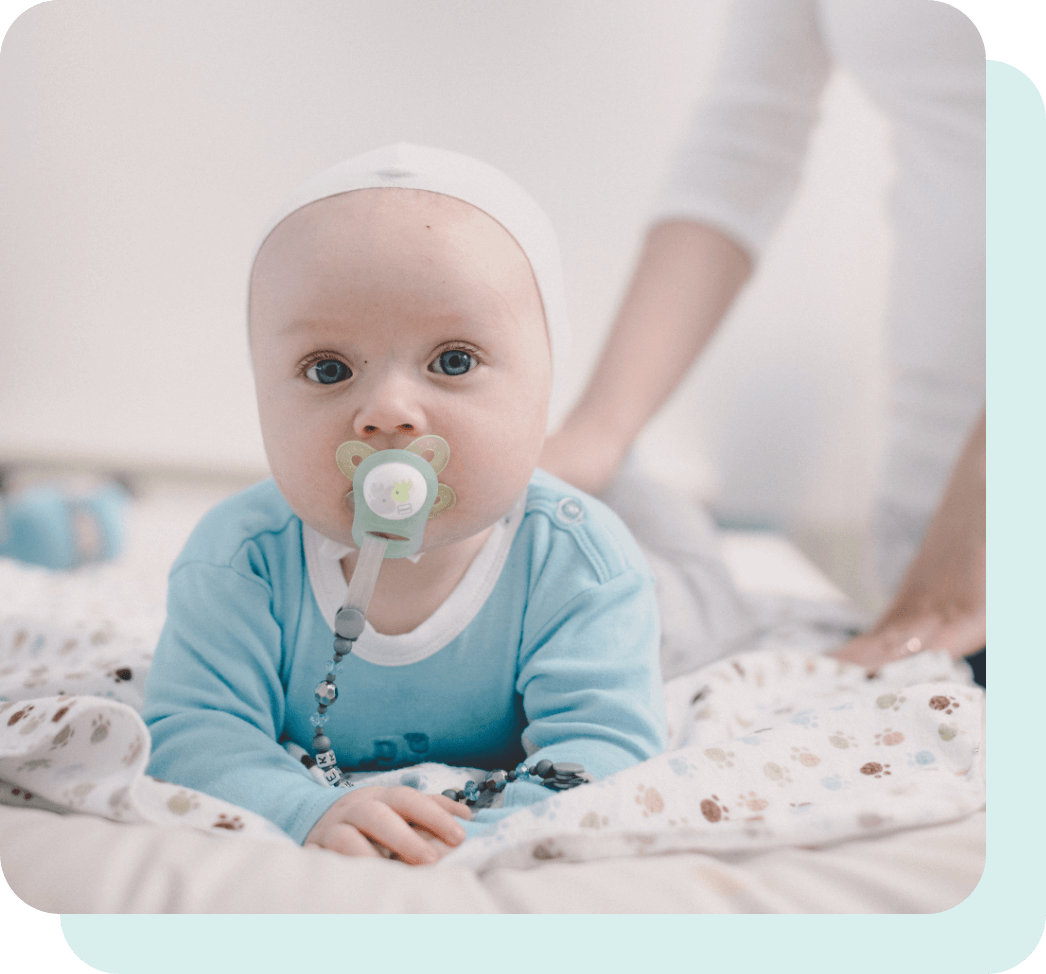
Assessment
We advise you to send photographs of your baby’s head, including from above and in front, for our clinicians to review. We provide an expert assessment and honest recommendations for the best way ahead.
We’re not able to formally diagnose craniosynostosis, but our expert clinicians are very experienced with head shape abnormalities, and can advise whether your baby is showing signs of synostosis or simply positional deformation (flat head syndrome).
There’s no pressure from us, and no distress for your baby. If we think that your baby might have craniosynostosis, we can advise you on how to obtain an urgent referral to one of the 5 UK craniofacial hospitals which treat this condition.
If your surgeon proceeds with surgery for craniosynostosis, then they may refer you back to us for post-surgery helmet therapy. We work closely with the NHS and other clinical experts and can coordinate on your child’s treatment.
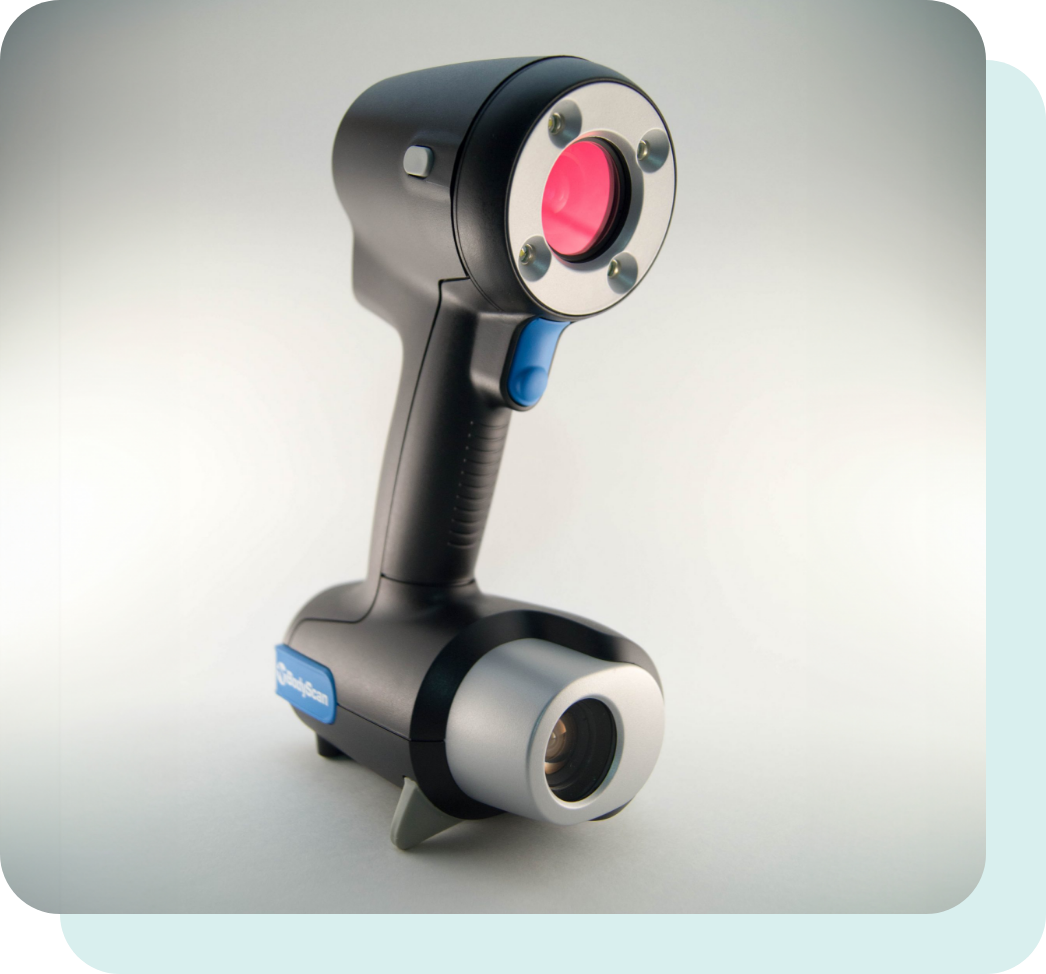
Scan
If your child has had craniosynostosis surgery and is ready to proceed to their post-surgery orthotic helmet, the next step is to take a scan.
We take 3D images of your baby’s head with baby-friendly, high-precision 3D scanning equipment. We refer to these scans and manual measurement data to monitor your baby’s progress.

Design
Next, we use data from the scan, and our orthotists design your child’s orthotic bespoke treatment helmet.
The TiMbandAir CS has a comfortable ventilated foam polythene liner with a fully ventilated 3D printed nylon 2 layer shell which gives lightweight added strength and control.
You can choose your preferred colours for the helmet’s shell and padding.
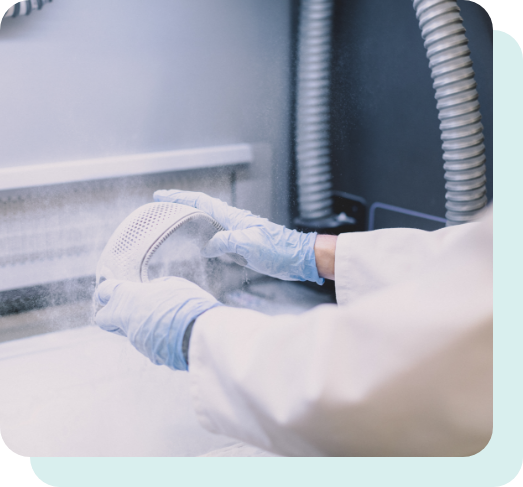
Manufacturing
Using the custom model we design and 3D printing technology, we have your baby’s helmet custom-made. 3D printing makes this process very speedy and accurate.
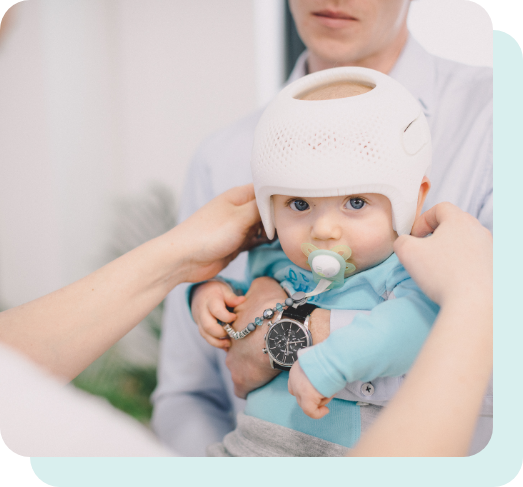
Fitting
Around two weeks later, we fit your baby in their helmet and make sure you and they are happy. We will go through what to expect, and explain how to care for the helmet.

Ongoing treatment
Your baby should wear their treatment helmet for 23 hours a day. The TiMbandAir should only be removed for bathtime, or if your baby has a fever, during treatment or physiotherapy.
We have regular appointments to check in on progress and make any adjustments. These will take place after the first two weeks, then after that at two to four-week intervals depending on the age of your child. We will provide any reports and letters required by your GP, surgeon or family doctor and you will also have access to clinical and phone support whenever you need it.
The exact duration of treatment varies, but your clinician will be able to advise how long your child will need to keep wearing their helmet.
Treatment duration is usually between 10 and 14 months and up to 3 helmets might be used to complete treatment. We liaise with your surgical team regularly and if we have any concerns will flag these up to them.
International patients can receive the same quality of treatment remotely, with virtual appointments, high-accuracy scans over iPhone and remote monitoring.
Our all-inclusive treatment plan includes assessment, 3D scans, custom helmet design, fitting, and ongoing support. Treatment can be delivered out of our network of clinics across the UK, or conducted completely remotely with virtual appointments, monitoring and high-accuracy scans. Overseas patients may incur some additional shipping, scanning, delivery and import costs.
It costs nothing to consult our expert clinicians. Your pre-assessment is always completely free and conducted remotely.
If you think your child may need treatment, schedule a free appointment with us, and one of our clinicians will be able to advise you further.